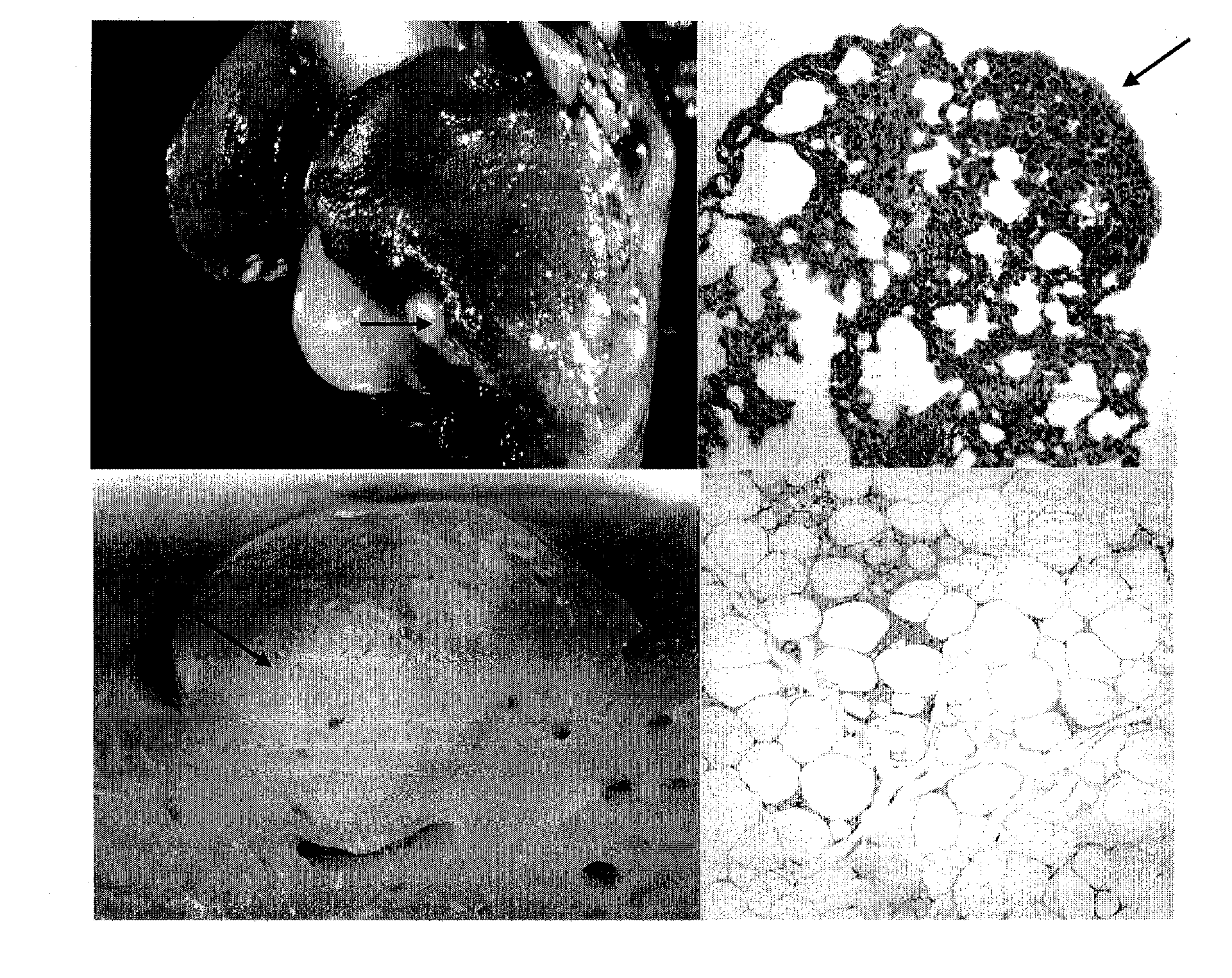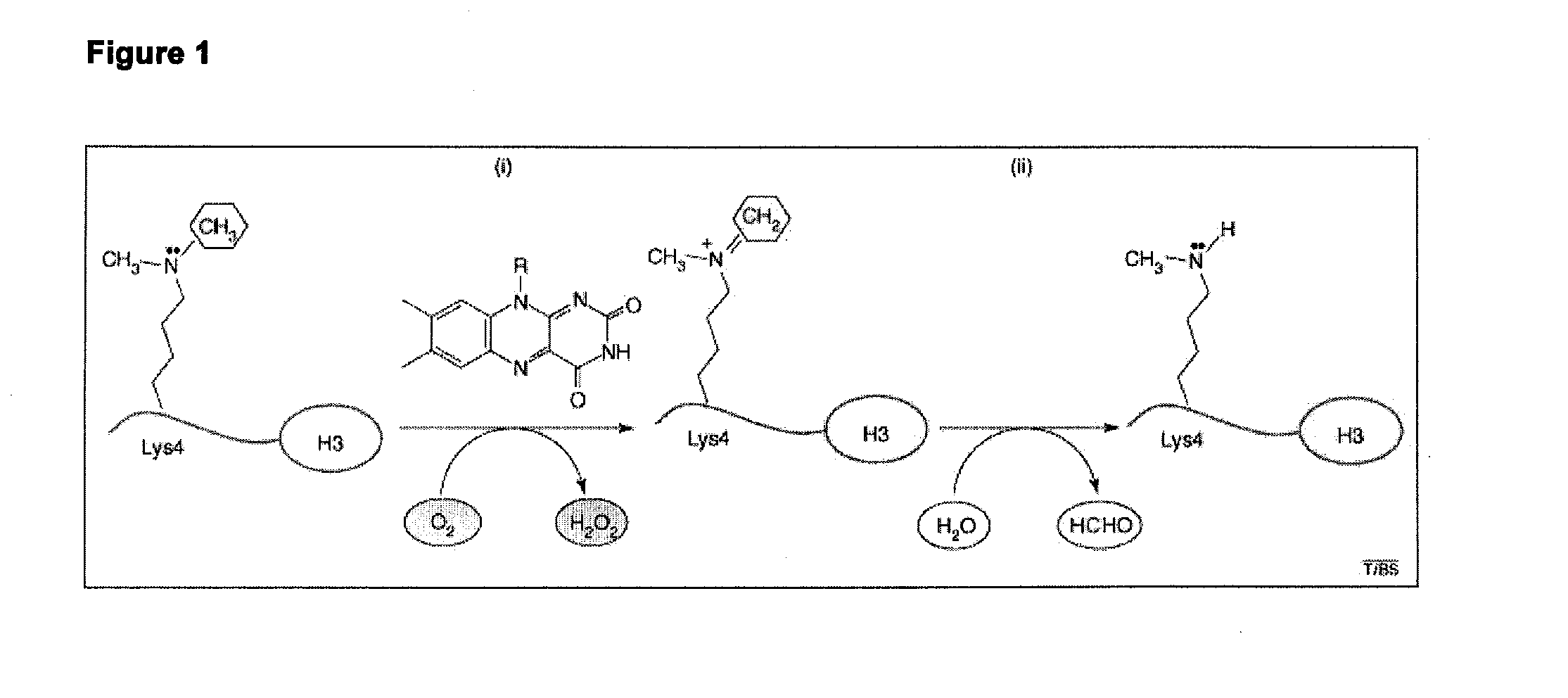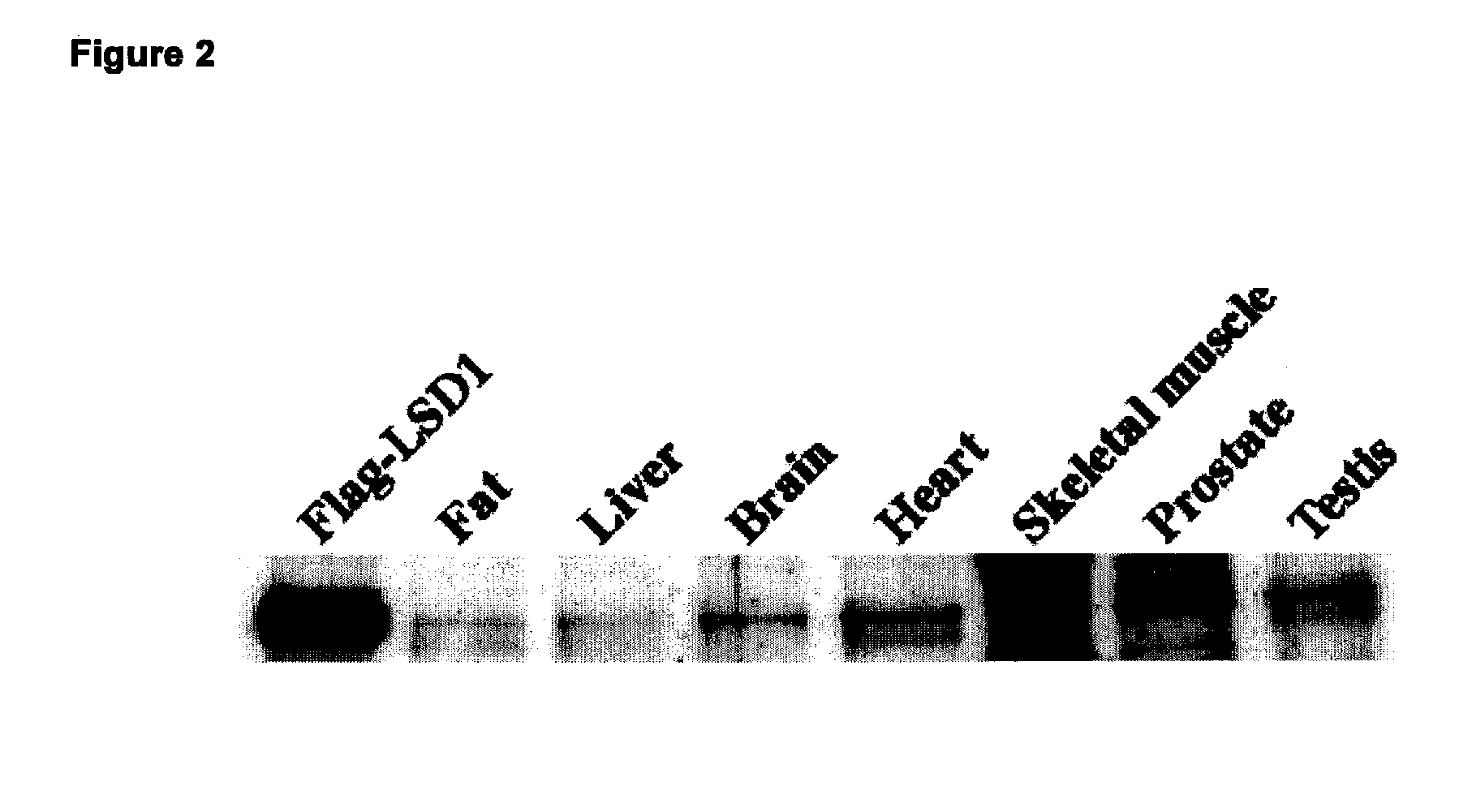Transgenic lsd1 animal model for cancer
a cancer and transgenic technology, applied in the field of animal models for cancer, can solve the problems of inability to cure patients, difficult to analyze the function of lsd1 under normal and pathological conditions, and early embryonic lethality of homozygous deficient mice, etc., to achieve the effect of inhibiting growth or metastasis
- Summary
- Abstract
- Description
- Claims
- Application Information
AI Technical Summary
Benefits of technology
Problems solved by technology
Method used
Image
Examples
example 1
Generation of the Targeting Vector
[0095]To generate the vector for ubiquitous expression of human Flag tagged LSD1 in transgenic mice the following cloning steps were made. Two copies of the core chicken β-globin insulator element HS4 from the Gary Felsenfeld laboratory (pNI-CD) were cloned into pSL301 using KpnI (pSL301-HS4). The insulator element was than isolated from this vector with EcoRV and cloned into a blunted NotI site in pSL301-TG-P containing an ARR2Pb promoter, a rabbit β-globin intron and a SV40 poly A site (pSL301-HS4-TG-P). In parallel LSD1 was cloned from pCMX-Flag-Namo with EcoRV and blunted NheI into blunted BamHI and BglII sites from pBS-β-pA-HS4 containing two copies of the core chicken β-globin insulator element HS4 (pBS-Namo-HS4). The letter vector linearized with EcoRV and the insert from pSL301-HS4-TG-P digested with EcoRV and blunted XhoI were ligated to generate pBS-ARR2Pb-AOF2. Than, pBS-ARR2Pb-AOF2 digested with blunted XbaI to remove the ARR2Pb promoter...
example 2
Generation of Transgenic Mice
[0096]All animals were housed in the experimental unit of the pathogen free barrier facility of the Central Clinical Research of the Freiburg University Medical Center in accordance with institutional guidelines and approved by the regional board. Transgenic mice were generated by pronuclear injection into fertilized eggs of FVB (Taketo et al. 1991) mice using standard procedures (Hogan et al. 1994). Three independent founder lines were analyzed. Genotyping and specificity of transgene expression was verified by PCR and RT-PCR, respectively in all 3 independent lines in RNA extracts of different organs. The following primers were used for genotyping generating a 153 bp fragment using standard PCR conditions: 5′-AATGCCTTCGAATTCAGCAC-3′ (SEQ ID NO 8); 5′-CCTTGTCATCGTCGTCCTTG-3′ (SEQ ID NO 9). The following primers were used for RT-PCR amplifying a 404 bp fragment of Flag-tagged LSD1 using standard conditions with 3% DMSO: 5′-gactacaaggacgacgat-3′ (SEQ ID N...
example 3
Detection Off LSD 1 Protein in Various Tissues of the Transgenic Mice
[0097]293 cells were transfected with 5 μg of pCMX-Flag-Namo. Protein extract was prepared 24 h after transfection using SC buffer containing protease inhibitors. Protein extracts from the indicated mouse tissues were dissolved in SC buffer containing protease inhibitors after homogenization in liquid nitrogen using a mortar and a pistil. Following preclearing with a 40 μl 1:1 slurry of GammaBind-Sepharose (Pharmacia), 2 mg of mouse tissue protein supernatants were incubated for 2.5 h with M2 α-Flag antibody (Sigma). Beads were washed five times with WB (10 mM Tris-HCl pH 8.0, 250 mM NaCl, 0.5% NP-40, 0.1 μg / μl bovine serum albumin, 0.5 mM Pefabloc) and analysed on a 10% SDS gel. Western blots were decorated with M2 antibody. Secondary antibody and chemiluminescence procedures were performed according to the manufacturer (Amersham).
[0098]Human FLAG-tagged LSD1 protein could be detected in various tissues from Rosa2...
PUM
 Login to View More
Login to View More Abstract
Description
Claims
Application Information
 Login to View More
Login to View More - R&D
- Intellectual Property
- Life Sciences
- Materials
- Tech Scout
- Unparalleled Data Quality
- Higher Quality Content
- 60% Fewer Hallucinations
Browse by: Latest US Patents, China's latest patents, Technical Efficacy Thesaurus, Application Domain, Technology Topic, Popular Technical Reports.
© 2025 PatSnap. All rights reserved.Legal|Privacy policy|Modern Slavery Act Transparency Statement|Sitemap|About US| Contact US: help@patsnap.com



